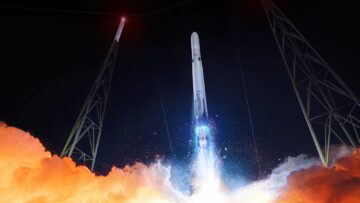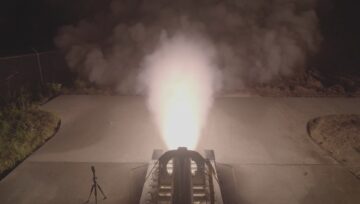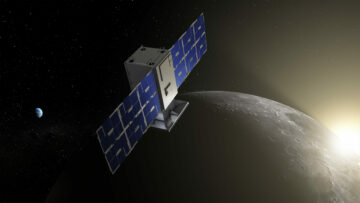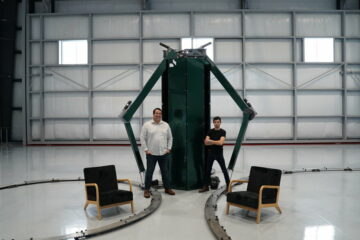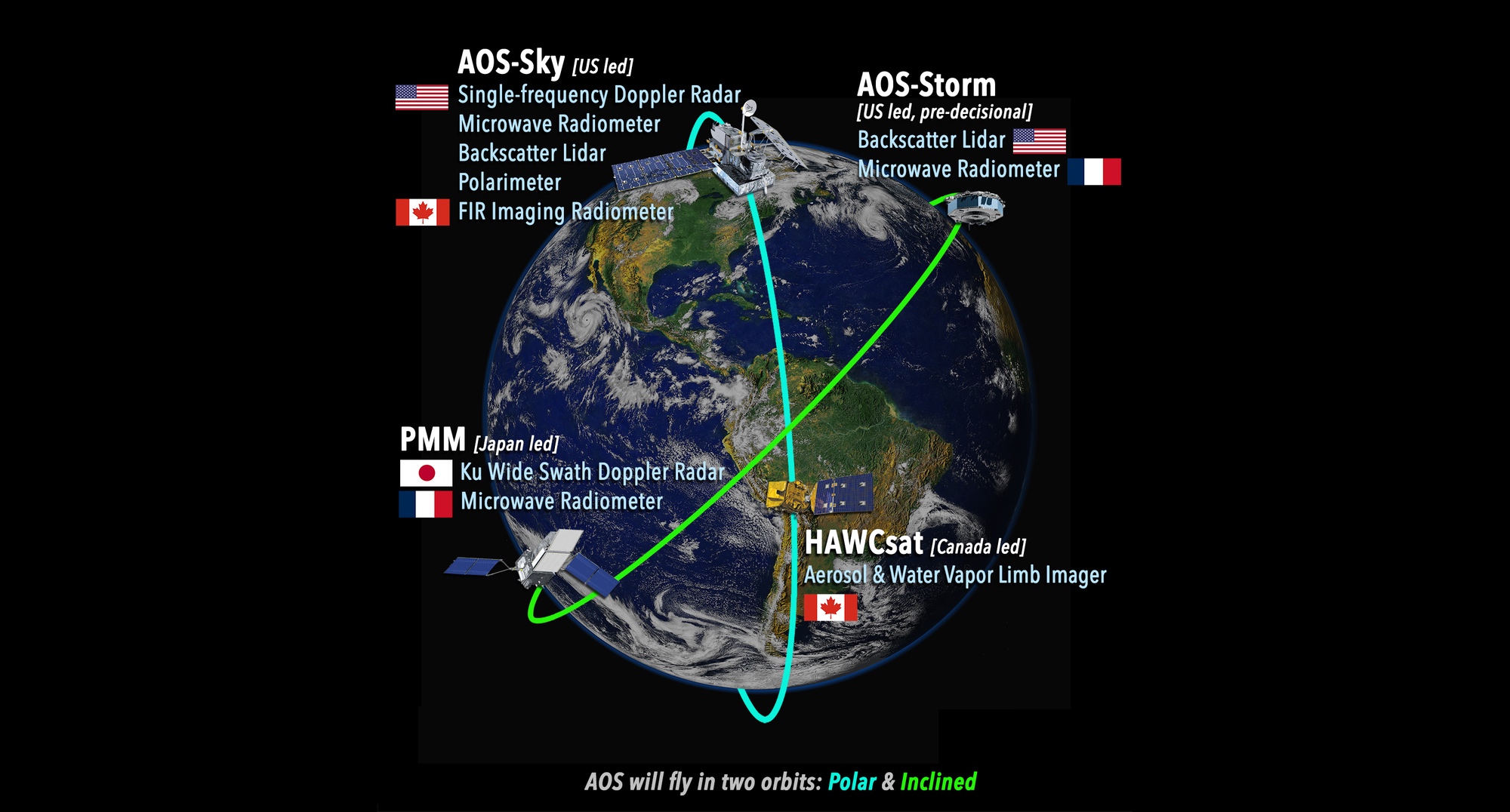
WASHINGTON — NASA is revamping a major series of Earth science missions, delaying some and relying more on international partners for others to reduce costs.
As part of NASA’s fiscal year 2025 budget proposal released March 11, the agency said it was restructuring the Earth System Observatory line of missions. Those missions are intended to collect data on “designated observables” identified by the Earth science decadal survey in 2018.
As recently as December, NASA said it was moving ahead with four of the missions: Atmosphere Observing System (AOS)-Storm, AOS-Sky, Surface Biology and Geology, and Mass Change, now called GRACE-C. A fifth mission, Surface Deformation and Change, was in an extended study phase.
The fiscal year 2025 budget proposal, though, would make significant changes in four of the five missions. Only GRACE-C is continuing largely unchanged in the proposal, which NASA officials say is due to budget pressures on NASA in general and Earth science in particular.
During a March 13 online town hall for NASA’s Earth science division, Julie Robinson, deputy director of the division, noted that projections for future Earth science budget dropped significantly in the 2025 proposal. That proposal projects spending about $12.25 billion on Earth science between fiscal years 2025 and 2029, nearly $1.2 billion less than the five-year runout in the 2024 budget proposal.
“That is the challenge that we had to address in this budget,” she said. “We needed to find some smart ways to bring some of the costs of those missions down.”
Robinson said NASA has adopted a strategy for the Earth System Observatory called “decouple, partner and compete.” That includes splitting large missions into several smaller ones, making greater use of international partnerships and opening some missions up to competition rather than being directed missions.
The strategy has the biggest impact on AOS-Storm and AOS-Sky. AOS-Storm will instead use a partnership with the Japanese space agency JAXA’s Precipitation Measurement Mission. AOS-Sky will shift from one large mission to several smaller ones, at least one of which will be open to competition rather than having its development directed by NASA.
“You will find that we were able to protect the things that the community was telling us were the most important aspects,” Robinson said. “We essentially went from a tightly coupled architecture to a decoupled architecture.”
That approach saves money through partnerships and by flying smaller missions when they are ready rather than waiting to complete a larger mission. NASA had planned to spend nearly $1.3 billion on the two AOS missions between 2024 and 2028 in its fiscal year 2024 budget proposal, while the 2025 budget proposal projects spending only a little more than half of that from 2025 to 2029.
Not everything is preserved with this approach, she acknowledged: a backscatter lidar instrument that was to be part of AOS-Storm had been dropped. “That will be a disappointment to parts of the community,” she said.
The Surface Biology and Geology mission was split into two, one that will fly a thermal infrared radiometer (TIR) and the other carrying a visible and shortwave infrared spectrometer (VSWIR). TIR will fly on a spacecraft provided by the Italian space agency ASI. VSWIR, which will build upon the EMIT instrument currently operating on the International Space Station, is facing a delay of two and a half years to 2032 and may not launch until four years after TIR, although NASA expects the two missions to overlap to allow for joint observations.
NASA is no longer planning to develop a Surface Deformation and Change mission. Instead, the NASA-ISRO Synthetic Aperture Radar (NISAR) mission jointly developed with India’s space agency ISRO will provide the data for that designated observable. NISAR is scheduled to launch later this year.
Many of the details about how those changes will be implemented are still being worked out. Robinson said NASA was planning to publish a community announcement next week with more details about how it will open part of AOS-Sky to competition.
The Earth science town hall meeting took place immediately after a separate town hall for NASA’s Science Mission Directorate (SMD). That included discussion about not just the Earth System Observatory changes but the proposed cancellation of the Geospace Dynamics Constellation, sharp cuts in funding for the Chandra X-ray Observatory and uncertainty about Mars Sample Return, among other missions.
“This is a very challenging time, particularly for SMD,” said Nicola Fox, associate administrator for science. “We always want to do more science and there are so many more great things that we would have loved to have done in FY25, but we do have to make tough choices with the resources we are provided.”
“We still do have a $7.5 billion portfolio,” she added. “We are grateful for every single penny of that.”
- SEO Powered Content & PR Distribution. Get Amplified Today.
- PlatoData.Network Vertical Generative Ai. Empower Yourself. Access Here.
- PlatoAiStream. Web3 Intelligence. Knowledge Amplified. Access Here.
- PlatoESG. Carbon, CleanTech, Energy, Environment, Solar, Waste Management. Access Here.
- PlatoHealth. Biotech and Clinical Trials Intelligence. Access Here.
- Source: https://spacenews.com/nasa-restructures-earth-system-observatory-to-reduce-costs/
- :has
- :is
- :not
- $UP
- 13
- 2%
- 2024
- 2025
- 2028
- 25
- 5
- a
- Able
- About
- acknowledged
- added
- address
- adopted
- After
- agency
- ahead
- allow
- Although
- always
- among
- an
- and
- Announcement
- approach
- architecture
- ARE
- AS
- aspects
- Associate
- At
- Atmosphere
- BE
- been
- being
- between
- Biggest
- Billion
- biology
- bring
- budget
- build
- but
- by
- called
- carrying
- challenge
- challenging
- change
- Changes
- choices
- collect
- community
- compete
- competition
- complete
- continuing
- Costs
- coupled
- Currently
- cuts
- data
- December
- decoupled
- delay
- deputy
- designated
- details
- develop
- developed
- Development
- directed
- Director
- disappointment
- discussion
- Division
- do
- done
- down
- dropped
- due
- dynamics
- earth
- essentially
- Every
- everything
- expects
- extended
- facing
- fifth
- Find
- Fiscal
- five
- flying
- For
- four
- fox
- from
- funding
- future
- General
- grateful
- great
- greater
- had
- Half
- Hall
- Have
- having
- How
- HTTPS
- immediately
- Impact
- implemented
- important
- in
- included
- includes
- instead
- instrument
- intended
- International
- international space station
- into
- ISRO
- IT
- Italian
- ITS
- Japanese
- joint
- jpg
- just
- large
- largely
- larger
- later
- launch
- least
- less
- lidar
- Line
- little
- longer
- loved
- major
- make
- Making
- many
- March
- March 13
- mars
- Mass
- May..
- measurement
- meeting
- Mission
- missions
- money
- more
- most
- moving
- Nasa
- nearly
- needed
- next
- next week
- no
- noted
- now
- observations
- observatory
- observing
- of
- officials
- on
- ONE
- ones
- online
- only
- open
- opening
- operating
- Other
- Others
- out
- overlap
- part
- particular
- particularly
- partner
- partners
- Partnership
- partnerships
- parts
- phase
- Place
- planned
- planning
- plato
- Plato Data Intelligence
- PlatoData
- portfolio
- preserved
- pressures
- projections
- projects
- proposal
- proposed
- protect
- provide
- provided
- publish
- radar
- rather
- ready
- recently
- reduce
- released
- relying
- Resources
- restructuring
- return
- Said
- sample
- say
- scheduled
- Science
- separate
- Series
- several
- sharp
- she
- shift
- significant
- significantly
- single
- smaller
- smart
- So
- some
- Space
- space station
- spacecraft
- spend
- Spending
- split
- station
- Still
- Strategy
- Study
- Surface
- Survey
- synthetic
- system
- telling
- than
- that
- The
- There.
- thermal
- they
- things
- this
- this year
- those
- though?
- Through
- tightly
- time
- to
- took
- tough
- town
- Town Hall
- two
- Uncertainty
- unchanged
- until
- upon
- us
- use
- very
- visible
- Waiting
- want
- was
- ways
- we
- week
- went
- were
- when
- which
- while
- will
- with
- worked
- would
- x-ray
- year
- years
- zephyrnet





